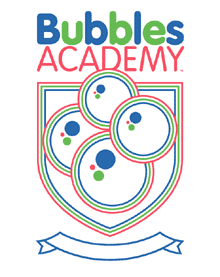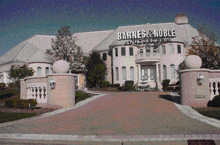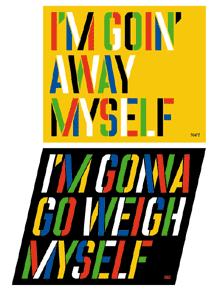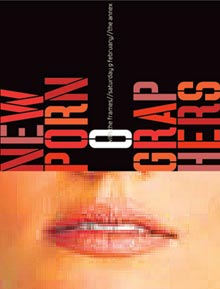
Rick Valicenti
(Part 1 of 2)
May 5, 2003—May 14, 2003
by Patric King
Speak Up (MAY.04.03) hi rick. how’s business?
Rick Valicenti (MAY.05.03) good question
tough answer, PK, because i could approach it from a handful of perspectives.
I’ll try and shotgun the usual suspects.
on the surface, billings are down.
This results from a steep downturn in the fees allocated for design services rather than less opportunities.
opportunities are cautious.
Enlightened clients willing to relish time in the ‘discomfort zone’ are less visible to me and the Thirst Universe. however, the enlightened clients from the past have found safe haven in my counsel.
What that tells me is that in these tough times the client/designer model is not taking the same creative risks, but instead collaborating on a seamless evolution into their next future.
I have heard in the past few months on more than one occasion, “we want to capture a new audience but we cannot afford to lose our existing market share.” While each client’s words are different, their intent is markedly similar.
On the subject of new business...
Over the years, i have rarely found myself presenting Thirst in situations where clients have also invited other design firms/designers to make an introduction. We had always been ‘pre-qualified’ based on referrals or successes. In making introductory presentations my batting average was always perfect in securing the opportunity if it felt right. In the past two months, my average has taken a turn south resulting from striking out, two for two. In both cases, I was told the ‘range’ of ‘'my’ portfolio was too ‘extreme’' (in one case) or ‘aggressive’ (in the other). What was once an asset appears to now be perceived as a liability. So much for 25+ years of practice.

|
I...had hoped that... collaboration from the outside would come my way. Only one...is in progress. It is with Jason Pickleman (JNL Graphics) and it evolved because we gently forced it on the client who wanted to pick between us. Together, we belong to the ‘mutual respect’ club.
|
|
 |
|

SU (MAY.05.03) when we worked together, you kept thirst organized as a fairly distinct family of companies: thirst, 3st2, and thirstype. all were fairly separate in identity. now, everything’s a sub-brand divided by discipline under the thirst universe umbrella. what prompted the business model change?
RV (MAY.05.03) Boredom.
To be quite honest, two forces helped shape this model...which, in retrospect, may be tenuous.
The first force resulted from the fact that MY key collaborations existed within the ‘studio’ environment of ‘Thirst’ employees. Each member of the studio had been ‘cast’ due to their specific skills and aptitude. As time went on, they saw opportunities ‘outside’ the studio as more attractive than those ‘inside’ the studio. As a result, a cloud of contempt would hover over any future ‘inside’ collaborations. One of two things would happen. One: the employee would move on or two: they would suffer gladly and stay.
For those that would stay, I set up a reward system that offered them ‘equity’ in a business where they could not only be the principal but they could also collaborate with ‘other’ designers ‘outside’ the thirst universe. Thirstype.com, led by chester, was the first functioning business ‘prototype.’ To date, chester has earned a considerable share of the business percentage and collaborates with outside designers on projects related to custom typography to typographic systems and guidelines. He also has added to his Thirstype.com staff affording him the time to generate new product at a steady pace.
In year three, the Thirstype.com model is a bright spot for all the right reasons.
Realeyes1.com and Tank20.com are business ‘shells’ designed to afford image makers and language artists a place to do business and their best work. It also affords any of the selling efforts to be strengthened by the impression of diversity which is both real and an illusion. Those practicing within these models also have ‘incentives’ that they cannot find in normal business relations with outside sources. It is an intelligent and cooperative business model when it is seen from the inside.

|
 |
|
*it’s a free country, you know*
|
|

All of the companies, including 3st.com/i and thirst are managed by the same ‘creative services’ manager, my sister, Barbara. I wouldn’t have it any other way. She is so on top of the details.
So back to boredom. I too had hoped that opportunities in the form of collaboration from the outside would come my way. Only one, albeit small, is in progress. It is with Jason Pickleman (JNL Graphics) and it evolved because we gently forced it on the client who wanted to pick between us. Together, we belong to the ‘mutual respect’ club.
It should be noted that in my mind ‘collaborating’ is quite different
that ‘being commissioned’ by a magazine’s art director or any other
intermediating party like an ad agency or public relations firm. I was so done
with those ‘commissioned’ opportunities a long time ago. They represent
the ‘thankless’ side of our profession.
Will other designers invite ‘me’ to collaborate with them? While I really hope so, it is unlikely to happen inside these city limits. I have renewed my representation in Japan as a result.
So why is it unlikely for collaboration to emerge from the local midwest design community?
I would suspect it has something to do with control. The truth of the matter is that control is the first thing one needs to surrender in a collaborative environment, whether it is with a client or another designer.
Once you let go, the important things are within your grasp.
So, in the meantime, my post 25+ years of practice period begins in boredom.

|
 |
|
Since you have known me, I have repeated over and over a simple mantra: ‘Invest in Yourself.’ The silent suffix to this mantra sounds something like ‘because no one else will.’ There is a kernel of wisdom here for all of us.
|
|

SU (MAY.06.03) you consistently encourage your collaborators to follow their natural
instincts regarding the surfaces of their work. i remember several of the
pieces we did went over budget in a time-for dollars sense when we worked
together, but the exploration was always worth it, even if it made poor barb
fret about your bottom lines. can you talk about how following passion
affects your billings?
RV (MAY.07.03) pk, before we begin this morning, let me say that 24 hours ago I claimed to be ‘bored.’ while there may be some truth in that statement, i really feel at peace. I am quite comfortable in knowing that i can do pretty much what i want and only few things really dig deep and fluster me. Maybe I could benefit from a few new things to fret about. Perhaps they would shake some of this current conplacency...or just maybe, boredom isn’t so bad and is simply a side effect of being at peace with oneself.
OK, to your request: can you talk about how following passion affects your billings?
Let me first take the liberty of substituting ‘passion’ with curiosity.
*it’s a free country, you know*
Curiosity is the ‘direction’ one is looking and passion is the ‘velocity’ which one moves in that direction.
Essentially, the relationship between curiosity and revenue is never ‘immediately’
proportional or equitable. IMMEDIATELY is the key word for at the time of creation
there is no ‘patron’ or ‘client’ funding one’s curious
pursuit. And if there is one, these patron/clients pray with their fingers crossed
that you will hit a vein of motherlode—accessible, functional and somewhat
original experimentation that they can take to market.
Since you have known me, i have repeated over and over a simple mantra: ‘Invest in Yourself.’ The silent suffix to this mantra sounds something like ‘because no one else will.’ There is a kernel of wisdom here for all of us.
You know that the ‘practice’ of design is really about getting things
right. There really is no reason to redesign a letterhead (remember those things?)
if you had already stumbled upon the perfect ‘solution’ for the letterhead.
Change the name, phone and fax and off you go with permission to prepare an invoice.
In our profession we see so much reselling of design based on successful formulas.
Formulaic specification hangs like a silver-lined cloud over every conference table.
They become the benchmarks. The icons. The solutions that worked to eradicate those nasty problems design promises to solve.
Genres of ‘successful’ form and function do exist and as a result have
entered into the public’s lexicon of recognizable code. It is not until the
ground shifts and the mainstream culture stops paying attention to ‘new’
messages packaged in these ‘old’ formulaic programs that design’s
practitioners return to the laboratory, focusing their noticing skills on the
next generation of communication thingies or a new processes of crafting the new
and improved thingy.
Well, if that was all there was to a life in design, Cassandre would not be our
only celebrated self-inflicted fatality. Thanks to prozac, design doesn’t
have its own canon of designer-Hendrix and designer-Morrison and designer-Kobain...we
might also have our own designer-Keith Moon. Instead we wheel our ‘senior’
class out at the National Conferences showing the underclassmen that with experience
and time well spent we reward ourselves with a fanny pat and enter every new realm
comfortably numb.
The less visible ‘pleasure point’ of design is the practice I like to
refer to as the ‘medium’ of design.
Designers in this medium use the same tools, codes, and foundations that the designers for hire employ. The difference is that the message made belongs to no one but the designer—often referred to in this context as ‘the author.’ Messages crafted by these design authors may have little or nothing to do with “anything remotely commercial.’ Designers in this context use design, the medium, to ‘make sense of their’s world and their place in it’ (or something like that.)
This type of practice, while it cuts in sharp contrast to the ‘design for hire,’ is and has been alive and kicking since the first cave painting or body tatoo. Even the love note on the beach sketched with driftwood belongs to a person using design to make their message come to life.
There are no offices to support this type of practice. This practice generates no invoices or tax forms. It does, however, have expenses. The expenses, however, are often paid in a different currency.
For instance, time equals money.

|
Come to think of it, many many requests for ‘something
like that thing you did for yourself, have come a knockin’, from the world
of commerce.
*funny that* |
|
 |
|

Can a designer practice ‘external’ and ‘internal’ design? Or better stated, can one designer work in service of him/herself and for others?
That question to me is at the heart of the discussion and is answered simply with a resounding YES!
Practicing design in both contexts is what i have delighted in throughout my quarter century career.
In fact, i find myself well aware that most of what i have done in the commercial arena is really me curious about ‘what it must be like to do real design.’ I guess I am design’s contemporary Zelig.
I remember being very self aware and conscious during a three-year period when I/we were doing the Chicago Board of Trade Annual report of what it was like doing an ‘annual report.’
Oh yes, we won awards all three years along with the printer and the photographer. In order to add steroids to our thrill of the moment, we also designed new typefaces for the trilogy (on my dime) just to mirror where we were at that ‘very moment in time.’
Since then I have never pursued the annual report genre of design. Why? Because I now know what that design practice feels like. Been there, done that, i guess. It should also be mentioned, that with the design accolades resulting from the CBOT experience, NOT ONE (repeat, not one) request for our services in the world of annual reports entered our universe.
*Maybe it was obvious we were ‘pretending’*
Come to think of it, many many requests for ‘something like that thing you
did for yourself, have come a knockin’, from the world of commerce.
*Funny that*
While they come with their own Tonka-toy-Brink’s-truck reward, they rarely come equipped with a long enough creative leash to make the sold-soul feel all warm and fuzzy inside. So one is damned if they do and damned if they don’t.
As I step down from this morning’s soap box, the sprout of wisdom may be summed up like this: If you ‘only’ pursue work for hire, you may miss out on those treasures you can mine within yourself.
Should you ‘only’ use design as a medium for your self expression, you will not have the opportunity to delight in time behind the gilded curtain of commerce and the resulting rich cynicism it affords.

This interview has been conducted exclusively for Speak Up.
Reproduction without our written consent is strictly prohibited. Please if you would like to use it for educational purposes or if you are interested in other means of reproduction. Thank you for your understanding.




